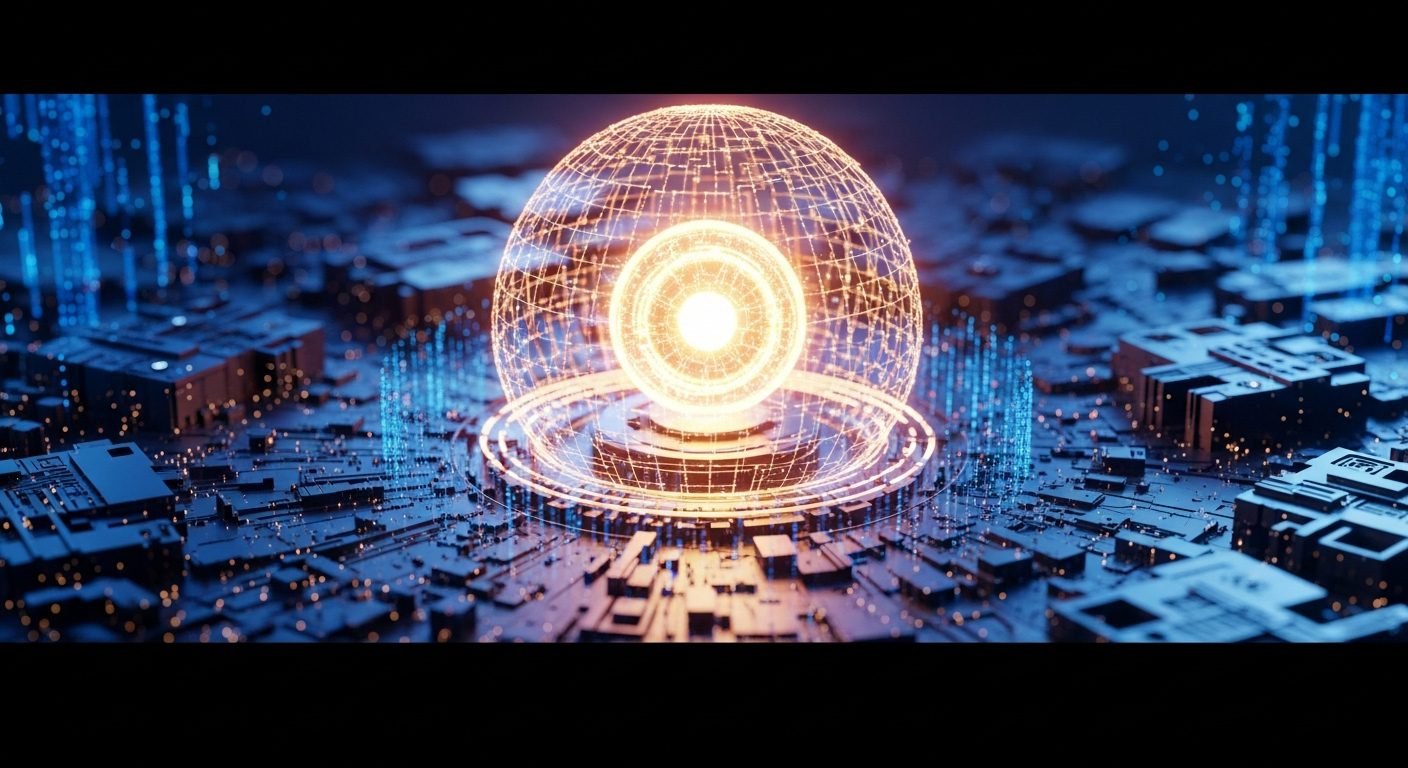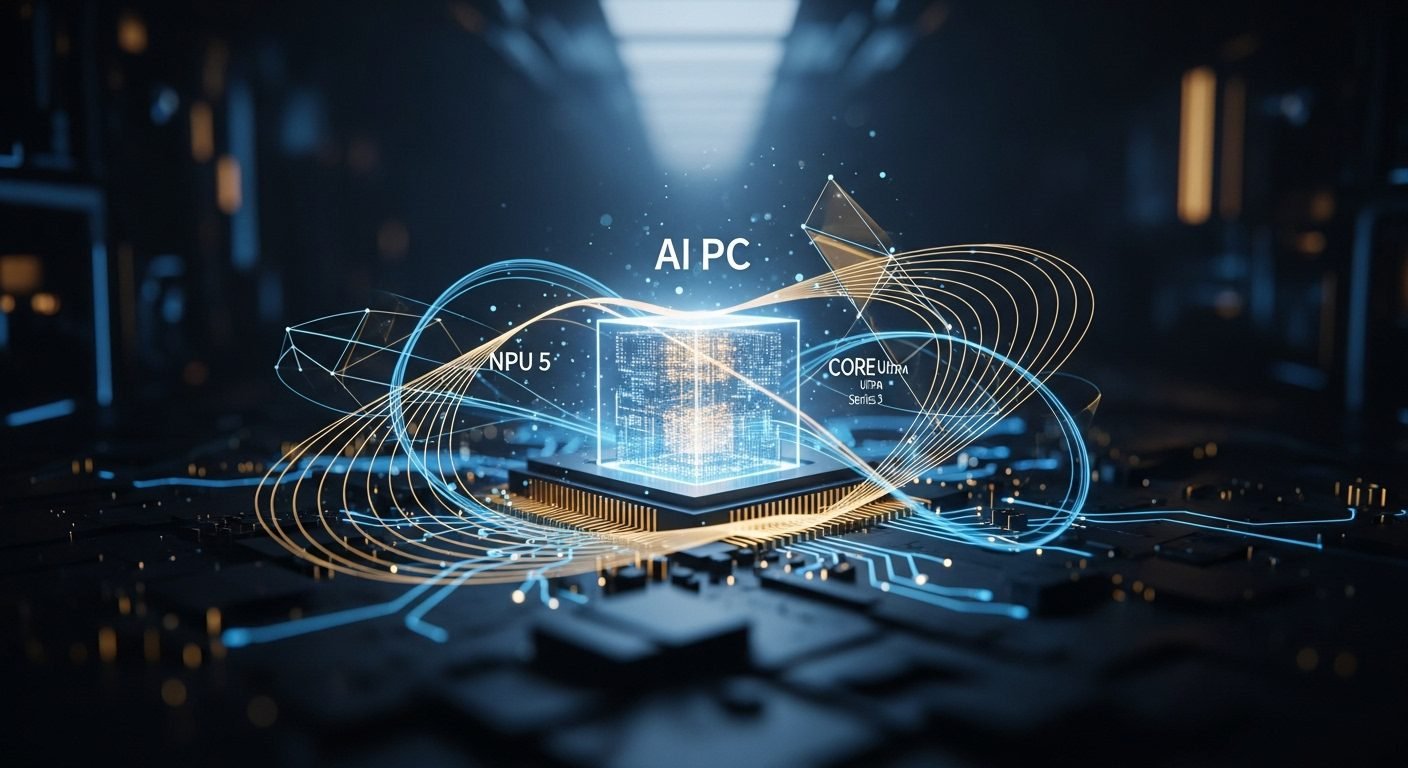What if the very fabric of our digital future, powered by artificial intelligence, depended on an energy source long shrouded in skepticism and fear? This isn’t a dystopian fantasy, but the emerging reality of AI’s nuclear hunger, a profound paradigm shift where Big Tech’s insatiable demand for computation is forging a new atomic age. The ascent of AI is not merely an intellectual triumph; it’s an infrastructural imperative, demanding energy on a scale humanity has scarcely conceived.
The relentless march of AI pushes global data center power demand to an projected 165% increase by 2030. US consumption alone could reach 400 terawatt-hours (TWh) a year, surpassing Mexico’s current electricity demand. A single median Gemini prompt, for instance, demands 0.24 watt-hours of electricity – a figure that becomes astronomical when multiplied by billions of daily queries. Traditional renewable sources, while vital, simply cannot provide the consistent, high-density baseload power required by hyperscale data centers operating 24/7. This is the unseen nexus: AI’s exponential rise is inextricably linked to the re-emergence of atomic power. [Visual: Infographic showing exponential growth of AI energy demand vs. traditional computing]
Future Frame: Imagine a world where data centers are no longer just server farms, but integrated energy hubs, pulsating with the steady hum of microreactors or even the controlled brilliance of fusion. This future redefines the very concept of “baseload” power, morphing it into an AI-native energy grid designed for unprecedented computational scale, where energy is as fluid and ubiquitous as data itself. The foundational shift isn’t just in how we power AI, but in fundamentally reimagining our entire energy infrastructure around its needs.
Leading the charge are the titans of technology, placing their bets on nuclear energy. Microsoft, recognizing the urgency, has committed to a 20-year agreement with Constellation Energy to reopen Unit 1 of the Three Mile Island nuclear plant by 2027, securing approximately 800 megawatts (MW) of carbon-free power for its data centers. Notably, Microsoft is also leveraging generative AI to streamline the complex permitting process for such energy projects.
Google (Alphabet) is pioneering the future with Kairos Power and the Tennessee Valley Authority (TVA) to deploy advanced Small Modular Reactor (SMR) capacity, targeting up to 500 MW by the early 2030s. This initiative includes building its first SMR in Tennessee, expected to generate 50 MW by 2030 for local data centers. Their ambition extends to nuclear fusion, with a power purchase agreement for 200 MW from Commonwealth Fusion Systems’ (CFS) planned ARC plant in Virginia. Nvidia’s CEO, Jensen Huang, succinctly put it: “winning the AI race is impossible” without nuclear power, underscoring his company’s investment in CFS, alongside Google and Bill Gates, in an $863 million funding round that brings CFS’s total capital raised to $3 billion.
Amazon is casting an even wider net, collaborating with Energy Northwest on two SMR facilities in Washington state, projected to generate 320 MW with an option to expand to 960 MW. Amazon has also partnered with X-energy to commercialize its Xe-100 high-temperature gas-cooled SMR technology, aiming to deploy over 5 gigawatts (GW) of new nuclear capacity across the US by 2039. This initiative, involving up to $50 billion in public and private investments and underscored by a significant US-South Korea trade deal, speaks to the scale of their commitment. Additionally, Amazon has signed a contract to purchase 1.9 GW of nuclear-generated electricity through 2042 from Talen Energy’s Susquehanna facility. [Visual: Map showing locations of Big Tech nuclear projects]
Even data center providers are making advanced nuclear deals. Equinix has announced multiple agreements, including a 500 MW agreement with Oklo for advanced nuclear reactors and a pre-order of 20 Radiant microreactors. They also have power purchase agreements with ULC-Energy and Stellaria in Europe. Meta has secured a long-term contract with Constellation Energy for the Clinton Clean Energy Centre in Illinois, set to expand its capacity by approximately 30 MW starting in 2027 to support growing AI workloads. Palantir has invested $100 million in The Nuclear Company to develop a Nuclear Operating System (NOS) designed to manage reactor construction, aiming to improve efficiency and safety. Meanwhile, Aalo Atomics has begun constructing its experimental Aalo-X reactor under the US Department of Energy’s Nuclear Reactor Pilot Programme, targeting criticality by July 2026 as a precursor to its commercial Aalo Pods, 50 MWe extra modular reactor (XMR) power plants, planned for deployment by 2029 to power data centers. This intense burst of activity signals a clear intent: the future of AI is undeniably fission-powered.
Future Frame: This is more than an energy shift; it’s a recalibration of global power. The companies that lead in AI development will be those that command reliable, clean, and abundant power. This race for nuclear dominance will reshape geopolitics, create new industrial titans, and drive unprecedented innovation in both atomic energy and AI itself, as intelligent systems begin to manage and optimize the very power plants that fuel them. We are witnessing the birth of a tightly integrated, self-optimizing energy-computation complex, a true societal reset.
This pivot to nuclear isn’t a nostalgic return to old technology; it’s a forward leap, driven by a convergence of technological innovation, economic necessity, and environmental imperative. After decades of stagnant development post-Fukushima, nuclear energy is experiencing a global resurgence, fueled by increasing electricity demands and ambitious decarbonization targets. More critically, the advent of SMRs and advanced reactor designs—with their promises of scalability, lower upfront capital costs, faster construction, and enhanced safety—makes nuclear uniquely suited for the distributed, high-demand needs of AI data centers.
Governments are actively fostering this rebirth. The US Department of Energy’s Nuclear Reactor Pilot Programme, launched in June 2025, and the ADVANCE Act of 2024 are specifically designed to accelerate the development and commercial deployment of these advanced nuclear designs. “Nuclear can play an important role in helping us to meet our demand, and helping us to meet our demand cleanly and round the clock,” observes Michael Terrell, Google’s senior director of energy and climate. This isn’t just about providing energy; it’s about reshaping the energy landscape itself, empowering a more decentralized, resilient, and secure power grid.
Yet, the path to this fission-powered future is not without its challenges. The timeframe mismatch is perhaps the most pressing: AI’s energy demands are immediate (within 3-5 years), while new nuclear builds, even SMRs, have longer timelines (Google’s SMR by 2030, Amazon’s by 2039). This means interim reliance on other sources, including fossil fuels, will likely persist. Cost and regulatory hurdles also remain significant; Google’s own 2025 environmental report noted that SMRs have not yet achieved widespread adoption due to their early development stage, high costs, and insufficient regulatory incentives. Public skepticism, a lingering shadow from past incidents like Three Mile Island and Chernobyl, must be addressed with transparent communication and demonstrable safety advancements. Furthermore, the immense water usage for data center cooling, often running into billions of gallons annually, presents an environmental concern that has already led to local water supply issues near some facilities. As Sasha Luccioni, an AI and climate change researcher, suggests, governments should prioritize “curbing the demand” of AI’s energy usage rather than simply expanding power generation, a point highlighted by the International Energy Agency’s comprehensive reports on “Energy and AI.” [Visual: Chart comparing nuclear project timelines vs. AI demand growth]
Despite these formidable hurdles, the long-term implications are nothing short of transformative. Nuclear energy, particularly through SMRs and the tantalizing promise of fusion, is poised to become a foundational component of the global energy system. It will provide consistent, carbon-free baseload power that enables not just digital infrastructure but a broader energy transition. We can expect trillions of dollars in global investment by 2050, fostering an era of unparalleled innovation in reactor design and fuel technology. The use of AI itself to streamline nuclear processes, from permitting to construction management, creates a poetic full-circle where the very technology driving the demand also helps accelerate its solution. The race for AI dominance is also, irrevocably, a race for nuclear energy leadership.
We are witnessing not just a new chapter, but an entirely new book in the story of human civilization and energy. This is a societal reset, powered by the atom, driven by AI, leading to an energy landscape utterly transformed.












согласование перепланировок нежилых помещений https://pereplanirovka-nezhilogo-pomeshcheniya9.ru .
согласование перепланировки нежилого помещения в нежилом здании http://www.pereplanirovka-nezhilogo-pomeshcheniya10.ru/ .
перепланировка в нежилом здании перепланировка в нежилом здании .
аренда маленького экскаватора в москве https://www.arenda-mini-ekskavatora-v-moskve-2.ru .
карнизы для штор купить в москве карнизы для штор купить в москве .
автоматические рулонные шторы автоматические рулонные шторы .
натяжные потолки от производителя в нижнем новгороде http://stretch-ceilings-nizhniy-novgorod.ru/ .
заказать перепланировку квартиры в москве https://proekt-pereplanirovki-kvartiry17.ru .
cjukfcjdfybt http://soglasovanie-pereplanirovki-kvartiry3.ru .
согласование перепланировки квартиры москва согласование перепланировки квартиры москва .
перепланировка офиса перепланировка офиса .
сео продвижение сайтов топ 10 сео продвижение сайтов топ 10 .
seo продвижение сайтов заказать в москве https://www.seo-prodvizhenie-reiting-kompanij.ru .
рейтинг агентств по продвижению http://www.top-10-seo-prodvizhenie.ru .
рейтинг seo фирм reiting-seo-kompaniy.ru .
birxbet 1xbet-giris-1.com .
1xbet tr 1xbet tr .
1xbet giri? 2025 1xbet giri? 2025 .
1xbet giri? yapam?yorum http://1xbet-4.com .
1xbet com giri? 1xbet-10.com .
большая кухня на заказ http://kuhni-spb-2.ru .
1xbwt giri? http://1xbet-14.com .
1xbet resmi giri? 1xbet resmi giri? .
медицинское оборудование медицинское оборудование .
частные наркологические клиники в москве http://narkologicheskaya-klinika-24.ru/ .
трезвая жизнь http://www.narkologicheskaya-klinika-25.ru .
мелбет онлайн ставки на спорт мелбет онлайн ставки на спорт .
seo и реклама блог http://statyi-o-marketinge7.ru/ .
курсы по seo курсы по seo .
карниз с приводом для штор https://elektrokarniz797.ru/ .
заказать трансляцию мероприятия http://www.zakazat-onlayn-translyaciyu4.ru .
стоимость онлайн трансляции на мероприятии https://www.zakazat-onlayn-translyaciyu5.ru .
топ 10 digital агентств luchshie-digital-agencstva.ru .
xbet xbet .